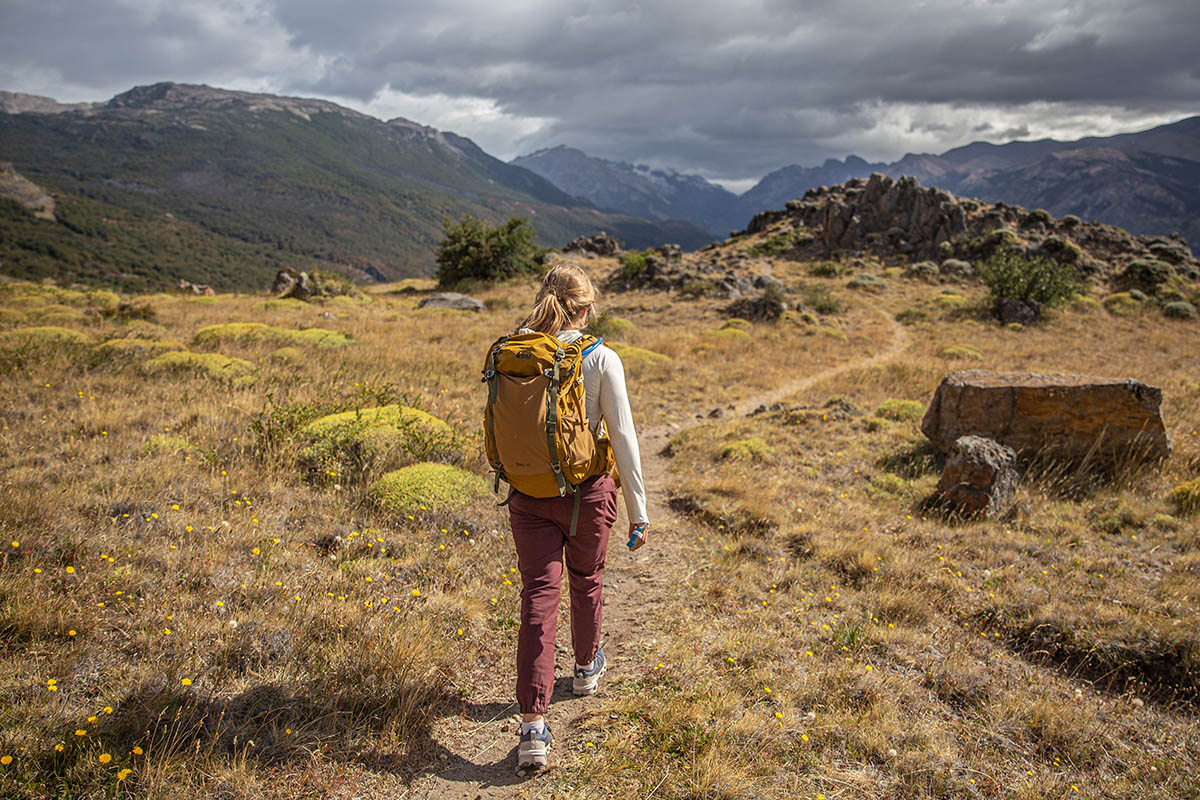
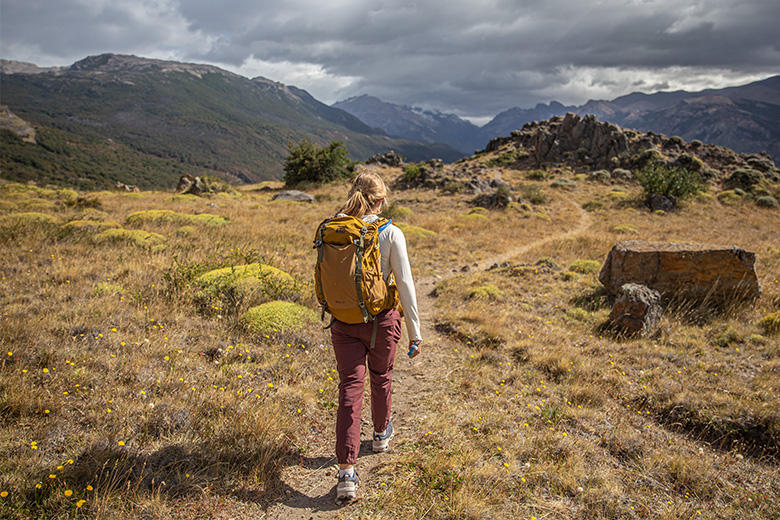
Price: $149
Weight: 2 lb. 9.0 oz. (women’s size XS-S)
Capacities: 25, 40L
What we like: Excellent support, massive interior, and practical organization at a solid value.
What we don’t: Heavy and overkill for most day hikes; lacks structure when unzipped.
See the Women's REI Co-op Trail 40 See the Men's REI Co-op Trail 40
REI Co-op’s in-house gear often strikes a nice balance between price and performance, and their Trail daypack is a shining example. Offered in 25- and 40-liter capacities, we took the larger model to southern Patagonia for testing and thoroughly enjoyed the well-cushioned suspension system and backpanel, excellent support, and generous pocket layout. The high-capacity design isn’t particularly light or streamlined, and the pack loses a lot of its structure when fully unzipped, but it's a very comfortable and well-built option that outperforms its price tag. Below we break down our experiences with the Trail 40. To see how it stacks up to the competition, check out our articles on the best daypacks and best women’s daypacks.
Editor’s note: We tested the past-generation Trail 40 for this review, and the design has since been updated with light changes to the storage layout and backpanel. We call out any notable differences throughout the article.
In testing, the REI Co-op Trail 40 felt a lot like a backpacking pack, which is a good thing. The backpanel and straps are generously padded, while the steel frame provides excellent support for shuttling a full day’s worth of gear. Even with a full 2-liter hydration bladder, ample snacks, and extra layers to combat shifting conditions in southern Patagonia, the pack distributed weight evenly and remained comfortable all day. The hipbelt is particularly well executed: It’s wide, nicely padded, and makes it easy to shift the weight of your load onto your hips rather than your shoulders. You even get load lifter straps for bringing the weight closer to your back, which isn’t all that common in the daypack market. To be clear, this level of support is overkill for most day hikers, but if you need the added capacity—whether you’re schlepping snacks and supplies for young kids, hauling extra camera gear, or simply like to pack the kitchen sink just in case—the Trail 40 is an excellent tool for the job.
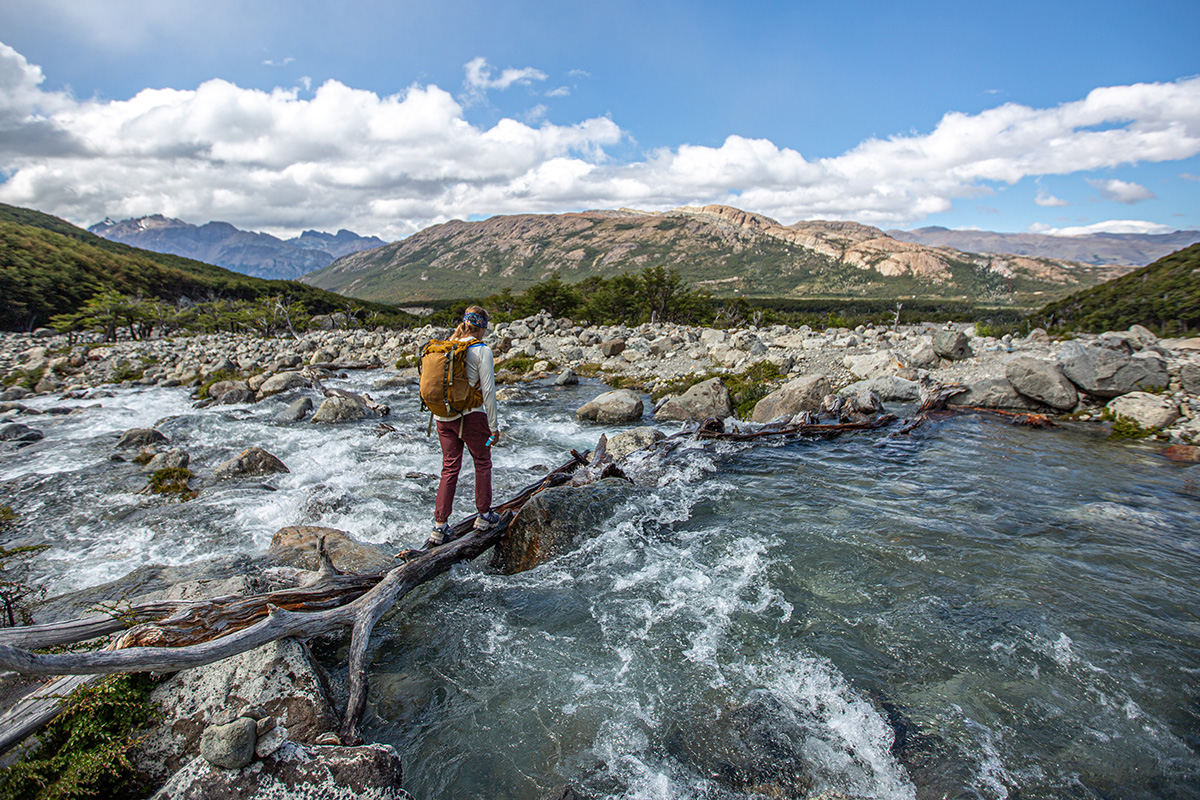
The REI Trail 40 isn’t excessively heavy at 2 pounds 9 ounces (for a women’s size XS-S), but it’s no featherweight, either. For comparison, most daypacks that made our best-of list this season check in between 1 and 2 pounds, which we feel is the sweet spot for most hikers. These include the Osprey Skimmer 28 (1 lb. 14.6 oz.), Gregory Juno 24 (1 lb. 14.4 oz.), and Patagonia Terravia 28L (1 lb. 9.6 oz.), just to name a few. However, as their names suggest, all three alternatives are considerably smaller than the Trail 40. More direct competitors like Osprey’s Tempest 33 (2 lb. 10.6 oz.) and Nemo’s Resolve 35L (2 lb. 12 oz.) check in slightly heavier, and the same goes for most alternatives in the 40-plus-liter range. In other words, the Trail 40 is pretty competitive for its size.

I found the Trail 40 to be a little lacking in the breathability department. The same cushy foam that makes the harness, hipbelt, and backpanel so comfortable also results in a drop in ventilation, which was particularly obvious on our austral summer trip to Patagonia. My back never became drenched in sweat, but the lack of airflow was noticeable when pitted against Osprey’s Tempest, which I was testing alongside the Trail 40. Compared to the REI, the Osprey pack features a suspended mesh backpanel that allows for better ventilation between the pack body and your back. Again, I wouldn’t describe the Trail 40 as a poor breather, but those who run warm or do a lot of hiking in desert climates may want to consider a mesh-heavier design (most of Osprey’s daypack lineup fits this bill).
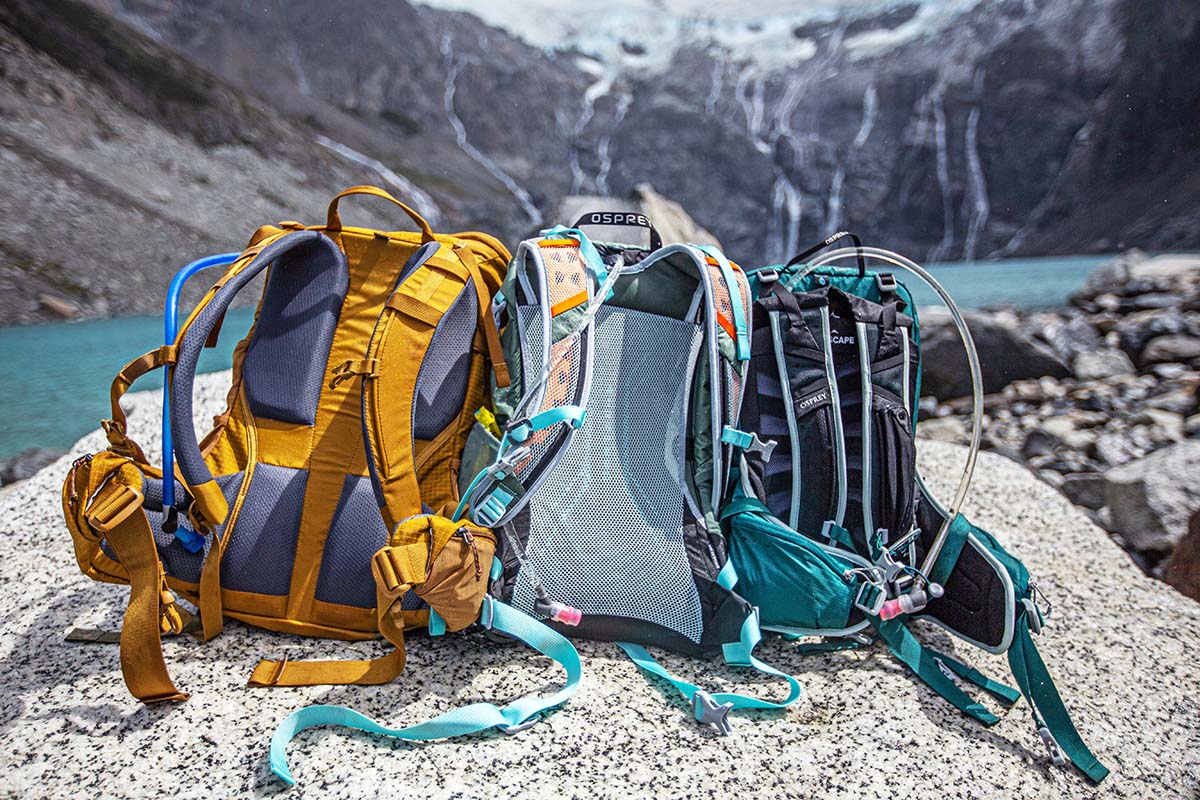
Southern Patagonia is notorious for challenging conditions, from blow-you-over wind to unexpected rainstorms, but the REI Co-op Trail 40 was up to the task. The durable water-repellent (DWR) coating along the exterior did a nice job fending off light moisture, and I appreciate that REI included a rain cover for added assurance in extended or prolonged storms. I didn’t have to revert to the rain cover during our trip to Patagonia, but a follow-up shower test confirmed that it is, indeed, fully waterproof. And importantly, despite the lid appearing saturated from moisture on a few occasions, all of my belongings inside the top pocket remained perfectly dry.
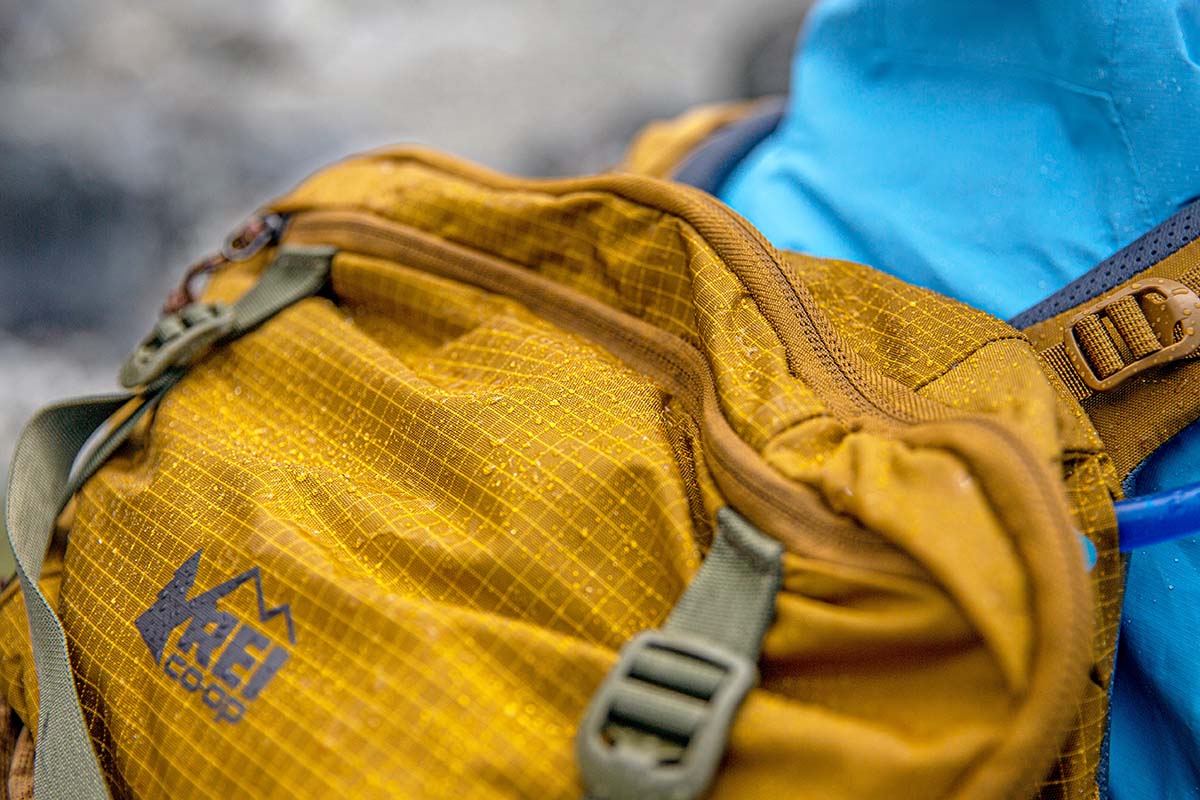
In terms of organization, the REI Trail 40 makes no concessions. Inside the pack, there’s a sleeve with a hanger clip for suspending a hydration bladder, a zippered mesh pocket underneath the lid, and a mesh water bottle pocket running down one side. Outside, you get a large front shove-it pocket that’s stretchy enough to accommodate an extra layer or two, along with side pockets that easily fit a 32-ounce Nalgene bottle (note: Our prior-generation pack had two side pockets on one side and one on the other, but the latest version is symmetrical). There’s also a pocket on the top of the lid that’s great for stashing items like an energy bar, sunscreen, lip balm, a headlamp, and other miscellaneous items. Rounding out the storage layout are dual hipbelt pockets that are big enough to swallow a smartphone. And for securing gear externally, there are ample attachment points and compression straps, including a daisy chain system that runs along the sides of the front mesh pocket.
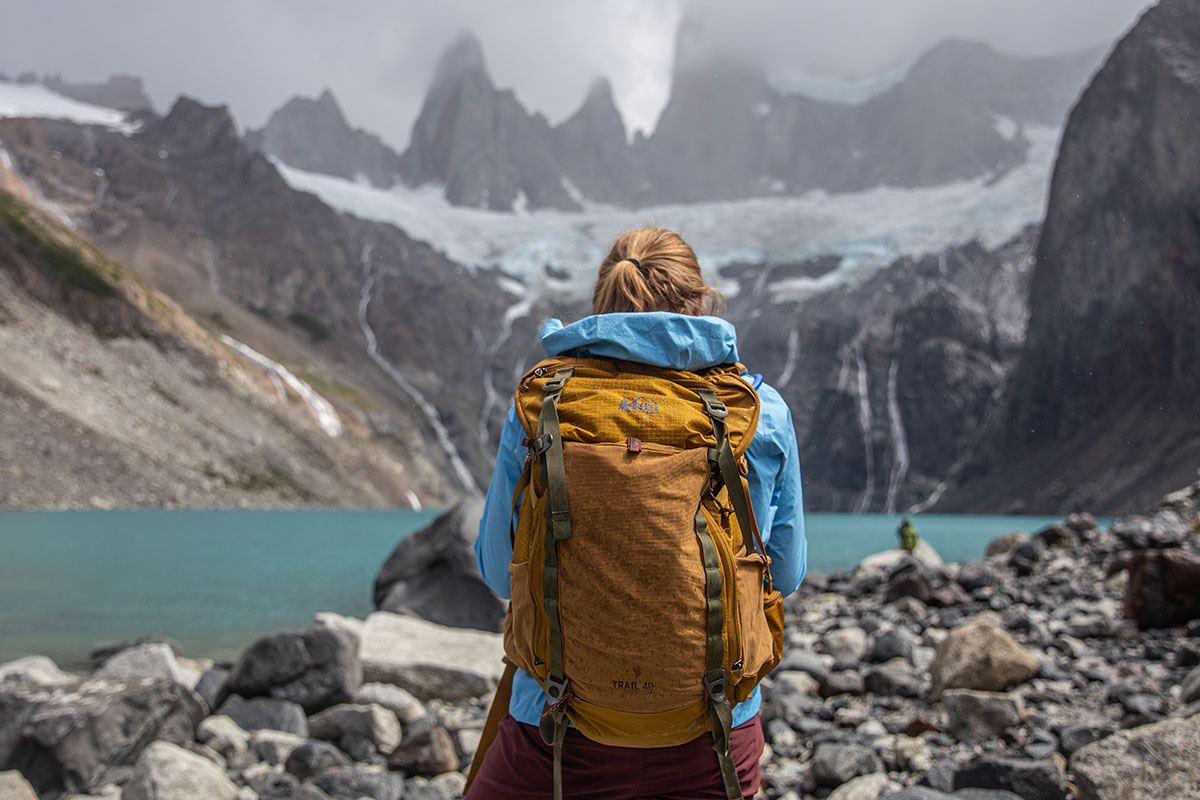
One feature that’s somewhat unique to the Trail 40 is its U-shaped opening. Similar to a travel backpack, this allows you to lie the pack flat on its back to access the full interior. In practice, grabbing items on the go was a breeze—even those that ended up crammed at the very bottom of the bag. The only downside is that the pack loses a lot of its structure when fully unzipped, especially if the lid is weighted down with heavier items (e.g., a smartphone or wallet). In these instances, we found it difficult to wrangle the lid into place and zip the pack back up. But it wasn’t a huge annoyance by any means, and being able to access the entire interior at once—rather than rifle through all your belongings—is undeniably helpful.
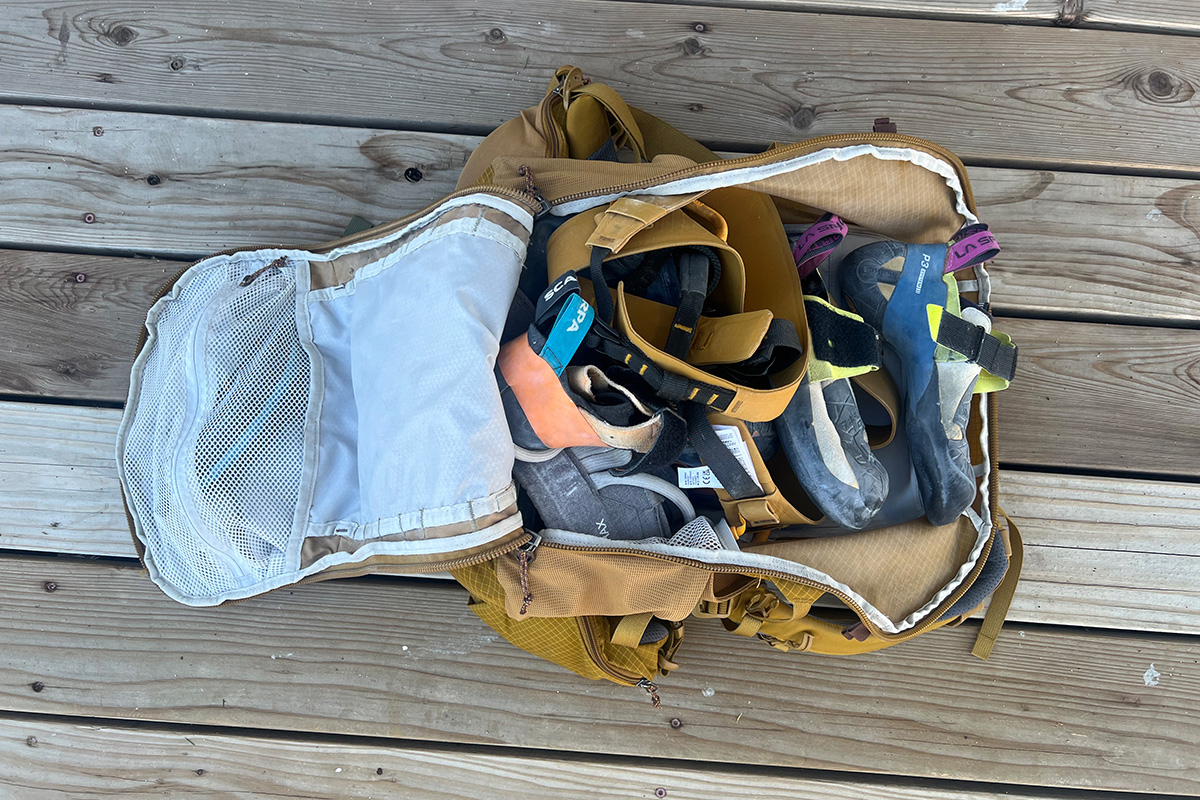
In addition to carrying comfort, durability is another area where the REI Co-op Trail 40 excels. I’ve been using the pack for well over two years now—it currently serves as my gym pack, but it’s endured countless hikes and multiple cross-country flights (it makes for a great carry-on) with almost no wear to show for it. The 210-denier (D) ripstop nylon body is very abrasion-resistant, and all of the mesh is extremely stretchy, allowing it to “give” rather than tear under pressure. All of the smaller components are holding up flawlessly, as well, including the smooth-operating zippers, solid buckles, and quality webbing. Considering how affordably priced the Trail 40 is, I feel it’s extremely well built overall.
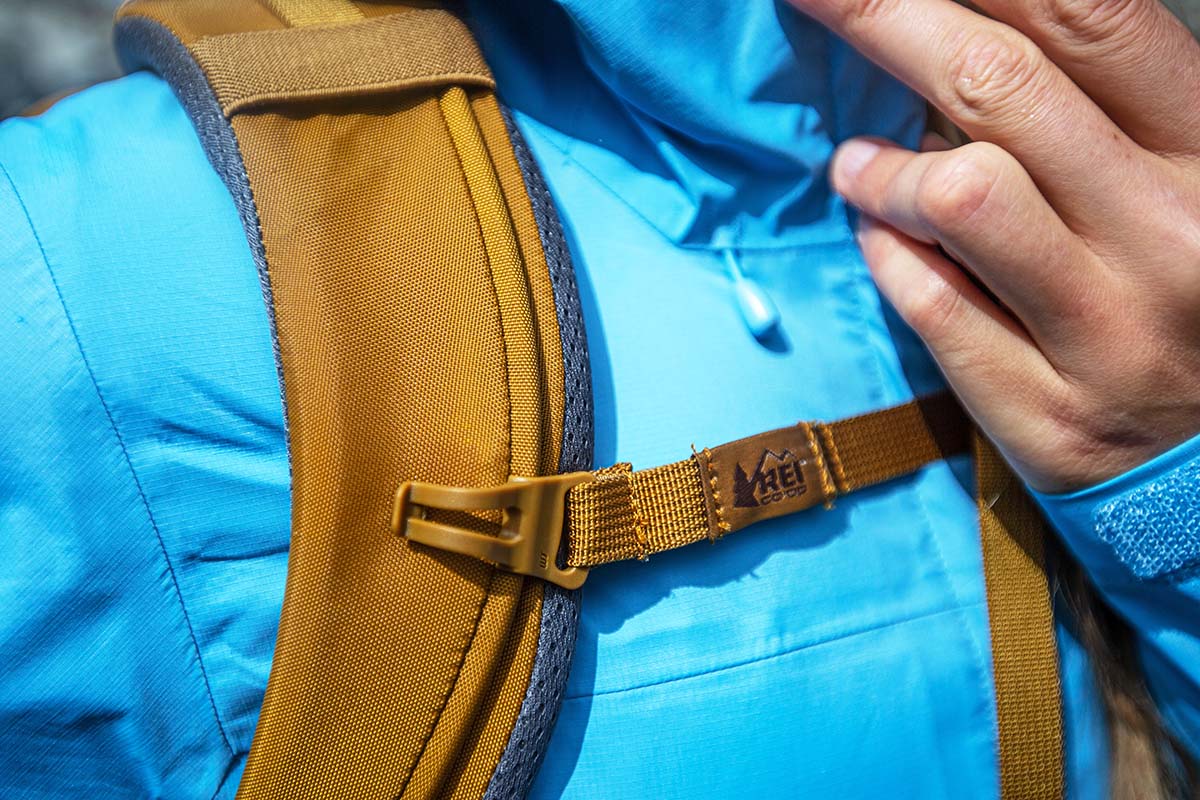
The Trail 40 is offered in three sizes for both men and women, including dedicated plus-size options. For reference, I’m 5’6” and weigh around 135 pounds, and the women’s size XS-S fit me perfectly (it’s designed to accommodate torsos between 15.5 and 17.5 in. and hips between 28 and 38 in.). In testing, I had no issues dialing in a snug but comfortable fit by tweaking the load lifters and straps—hipbelt, shoulder, and sternum—and I experienced no discomfort or friction-related issues like hot spots or chafing. It’s also worth noting that many competing daypacks are only sold in a single size, making the REI a standout in terms of fit customization.
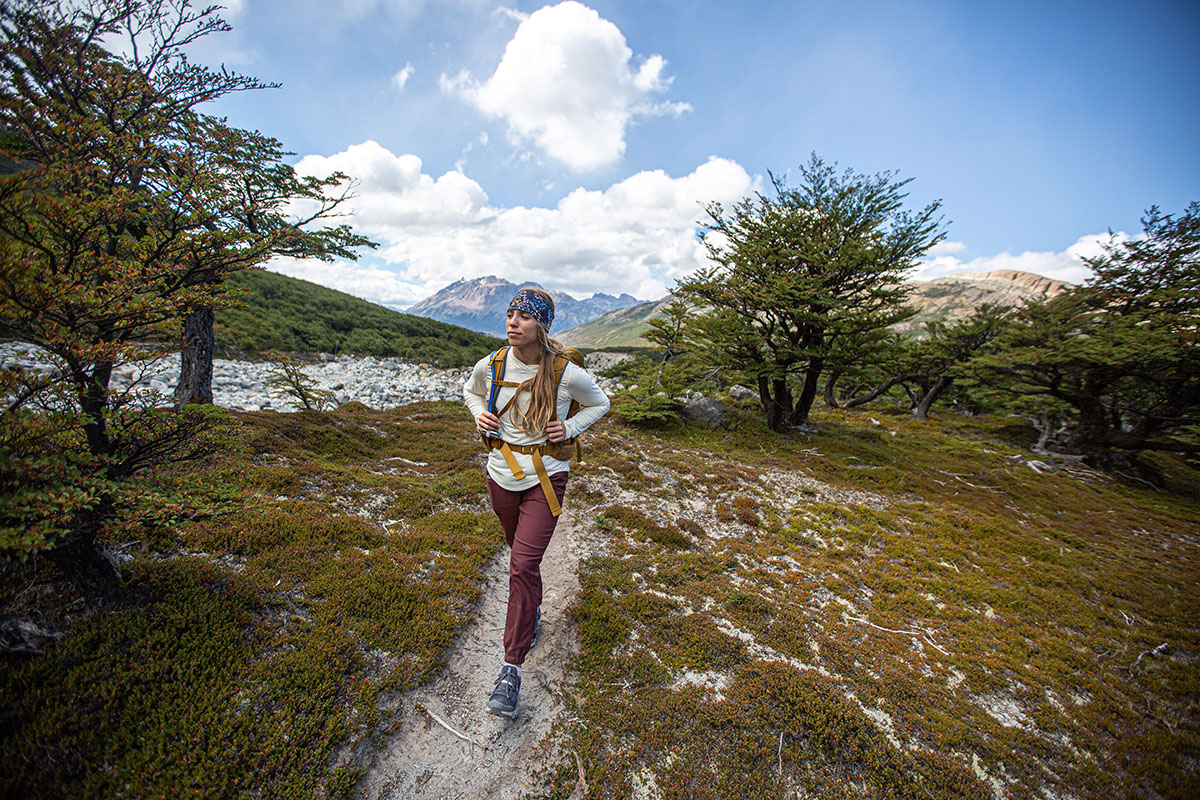
We appreciate when brands go the extra mile by incorporating eco-friendly practices into production, and REI is consistently at the forefront. In this case, the Trail 40 pack is made with recycled nylon and polyester, along with bluesign-approved materials that forgo harmful chemicals and have been deemed safe for workers, consumers, and the environment. The pack also boasts a PFAS-free DWR coating, which is free from harmful per- and polyfluoroalkyl substances that are notorious for their inability to break down over time. Finally, REI is a Climate Neutral Certified brand, indicating that they are taking active steps to measure, reduce, and ultimately offset their greenhouse gas emissions.
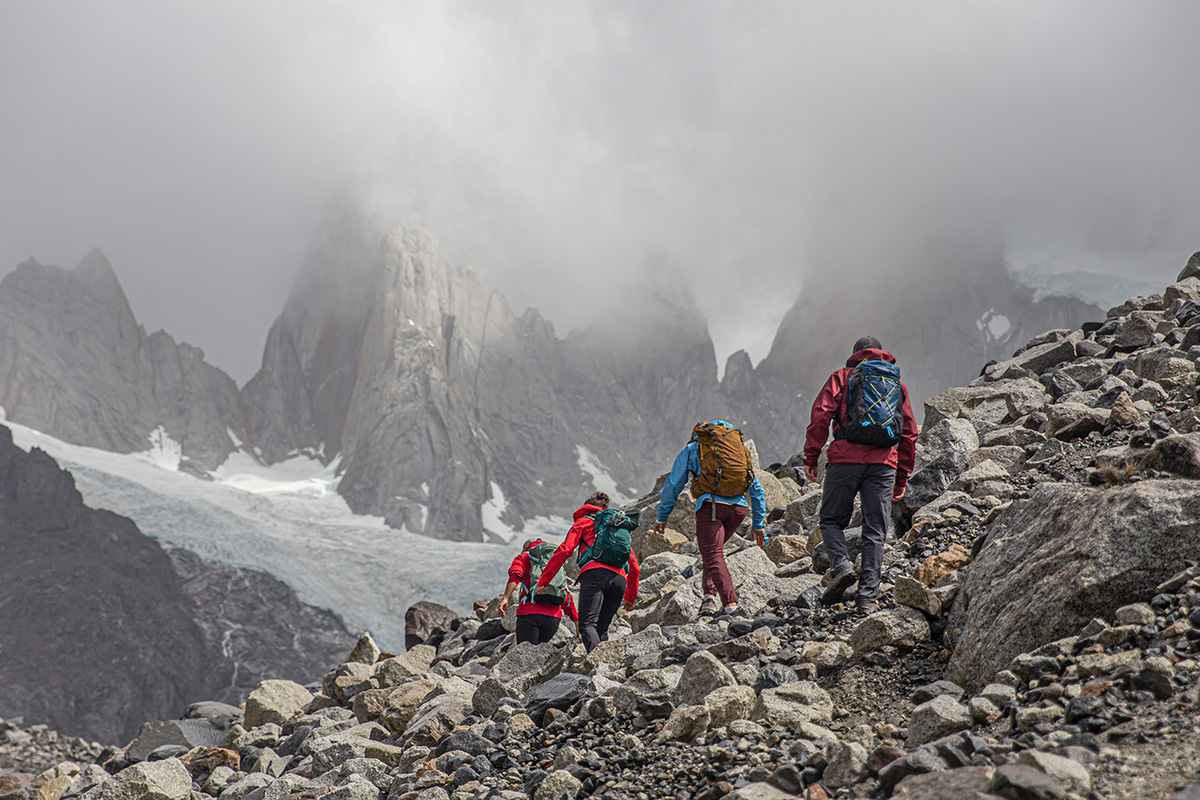
I tested the women’s Trail 40 pack for this review, and it’s also sold in a men’s version for the same price. In parsing out the differences, the men’s pack is offered in different colorways and larger sizes (the smallest S-M size can accommodate torsos between 17.5 and 19.5 inches, while the largest XXL-4XL size fits 18- to 20-inch torsos). This results in a slight weight penalty, with the men’s options starting at 2 pounds 12 ounces. Otherwise, the two packs are largely identical. REI also offers the Trail 25, which shares a lot in common with its larger sibling but is a unisex design and only comes in two sizes. Rounding out the lineup are the Trail 2 and Trail 5 waist packs, which are great for minimalist hikers and travel. The Trail 2 is also a viable replacement for a purse, although the Trail 5 is on the bulky end for everyday use.
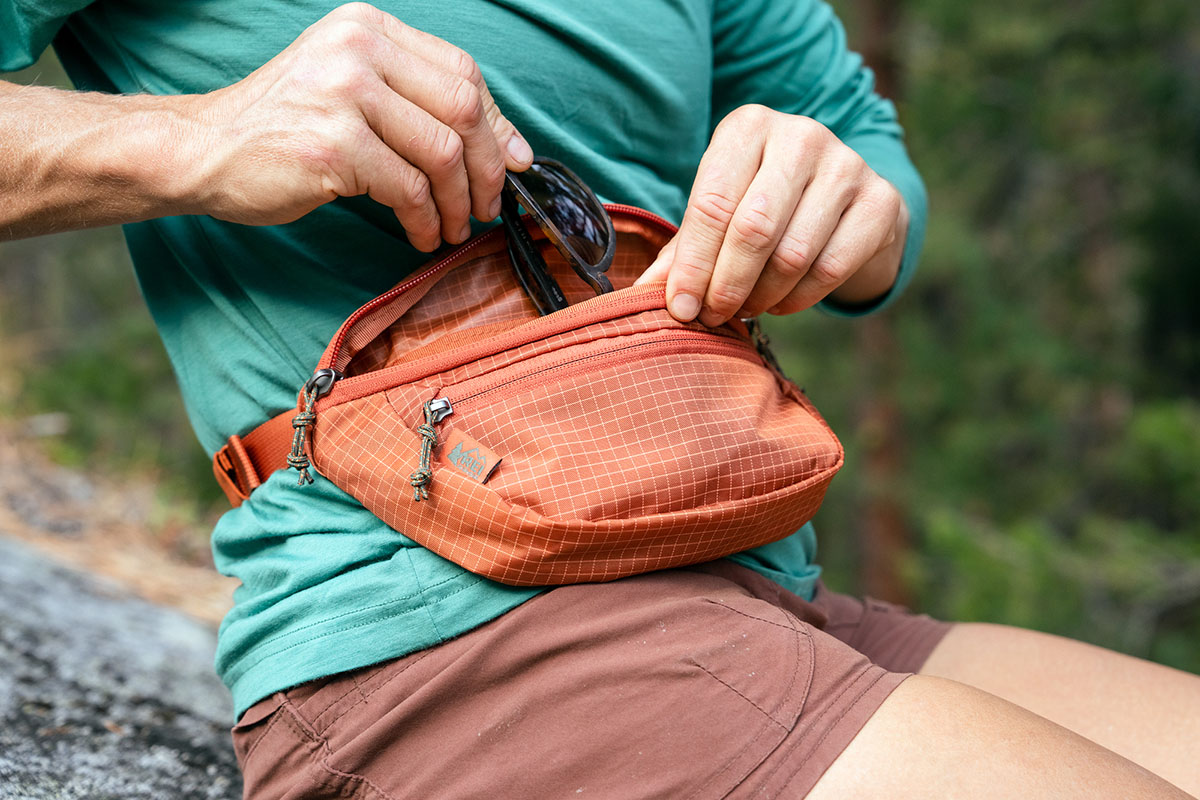
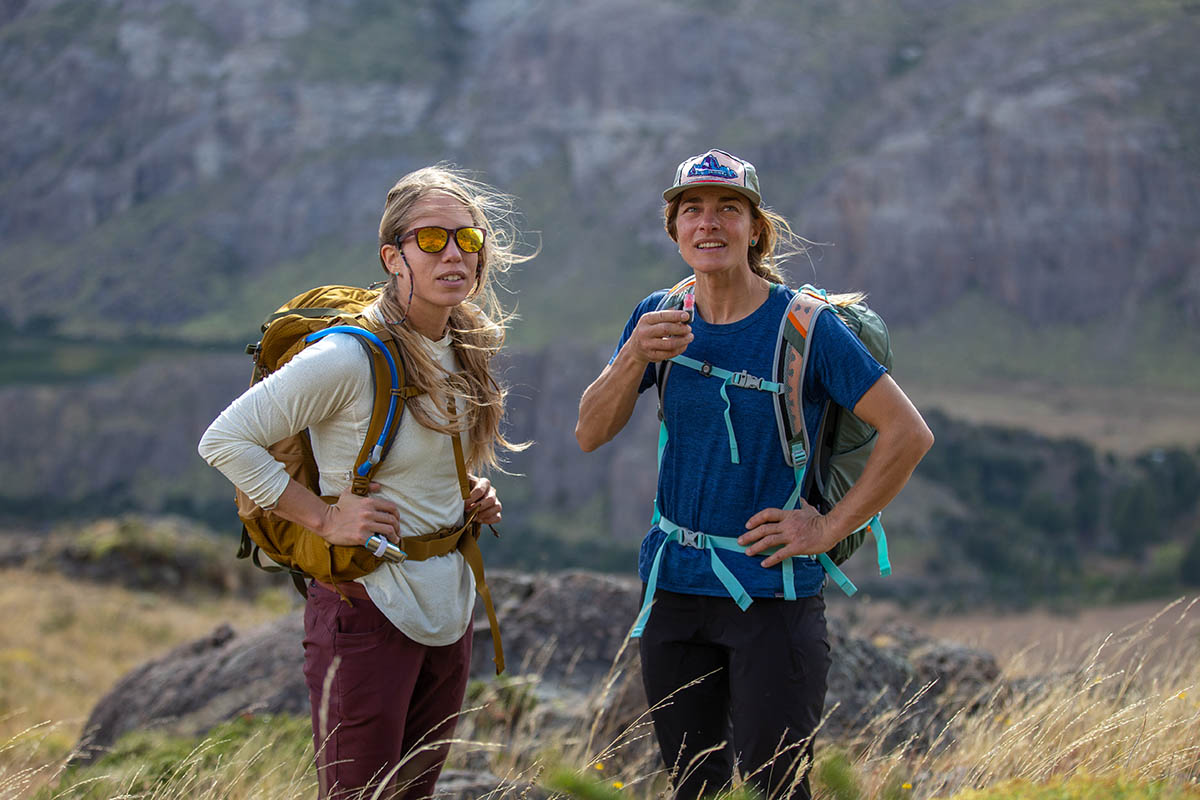
| Daypack | Price | Weight | Capacities | Hipbelt | Frame | Pockets |
|---|---|---|---|---|---|---|
| REI Co-op Trail 40 | $149 | 2 lb. 9.0 oz. | 25, 40L | Cushioned | Yes | 6 exterior |
| REI Co-op Traverse 35 | $159 | 3 lb. 3.0 oz. | 35, 60L | Cushioned | Yes | 6 exterior |
| Osprey Tempest 33 | $190 | 2 lb. 10.6 oz. | 11, 22, 26, 33, 44L | Cushioned | No | 6 exterior |
| Nemo Resolve 35L | $220 | 2 lb. 12.0 oz. | 15, 25, 35L | Cushioned | Yes | 6 exterior |
| REI Co-op Flash 22 | $60 | 14.0 oz. | 18, 22L | Webbing | No | 3 exterior |
The Trail 40 is our favorite high-capacity daypack this season, but REI offers another quality and affordable option in their Traverse 35. For $10 more than the Trail, the Traverse looks and feels more like a traditional backpacking pack, with a floating top lid and a more upright shape. It also features a traditional top-loading design, along with a J-shaped zipper for quickly accessing items at the bottom of the main compartment. The Traverse is heavier than the Trail at 3 pounds 3 ounces for the smallest women’s size despite offering less capacity, although neither design will appeal to minimalists. A final key difference is the backpanel design: The Traverse features a torso adjustment system for a more customizable fit and uses more mesh along the back and straps for improved breathability. In the end, both packs strike us as solid values for what you get, and a final decision will come down to which features are most important to you.
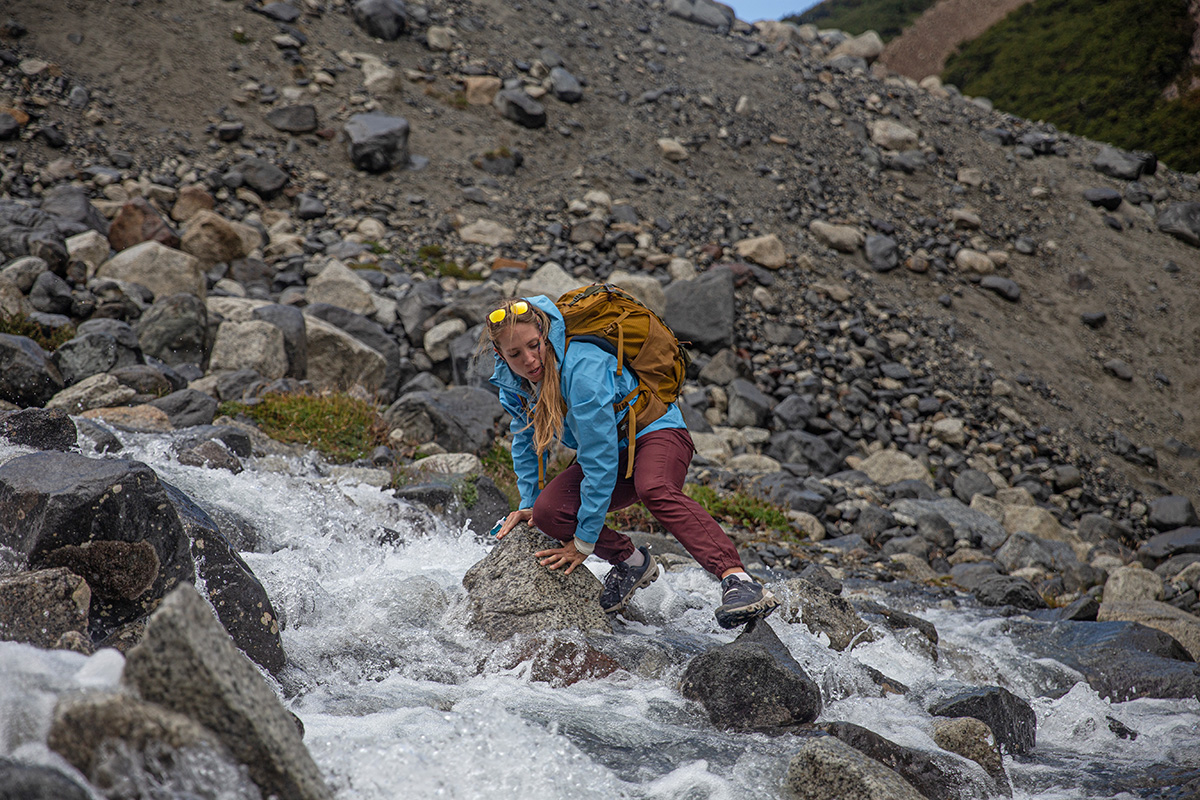
Osprey is one of the biggest names in outdoor packs, and their Tempest 33 offers a step up in refinement compared to the Trail 40. Like the Traverse covered above, the Tempest is a top-loading pack with a fixed top lid, which some may prefer over the Trail 40’s U-shaped opening (it’s largely a matter of personal preference). You also get Osprey’s AirScape backpanel, which features a large portion of suspended mesh that allows for great airflow between the pack and your back. The Tempest is slightly heavier than the Trail while offering less interior space, but the storage layout is very similar, and all-day comfort and support are excellent. If you can get past the $190 price tag, we think the Tempest is a very high-quality alternative.
Next up is a relatively new addition to the market: Nemo’s Resolve 35L Endless Promise. Like the Trail 40, we found the Resolve very comfortable to carry thanks to its well-padded backpanel and shoulder straps (plus a steel frame for additional support), durable with hardwearing fabrics and components, and easy to access with a similar U-shaped opening. There are some core differences, however: The Resolve is decidedly more technical than the Trail with running vest-style pockets along the shoulder straps, an adjustable torso system, breathable cushioning, removable compression straps, and technical fabrics that offer a boost in tear and water resistance compared to standard nylon. The Nemo is heavier at 2 pounds 12 ounces and will cost you a steep $220, but it's a very premium addition to the daypack market. For most casual hikers, however, the Trail 40 will offer similar performance for $71 less.
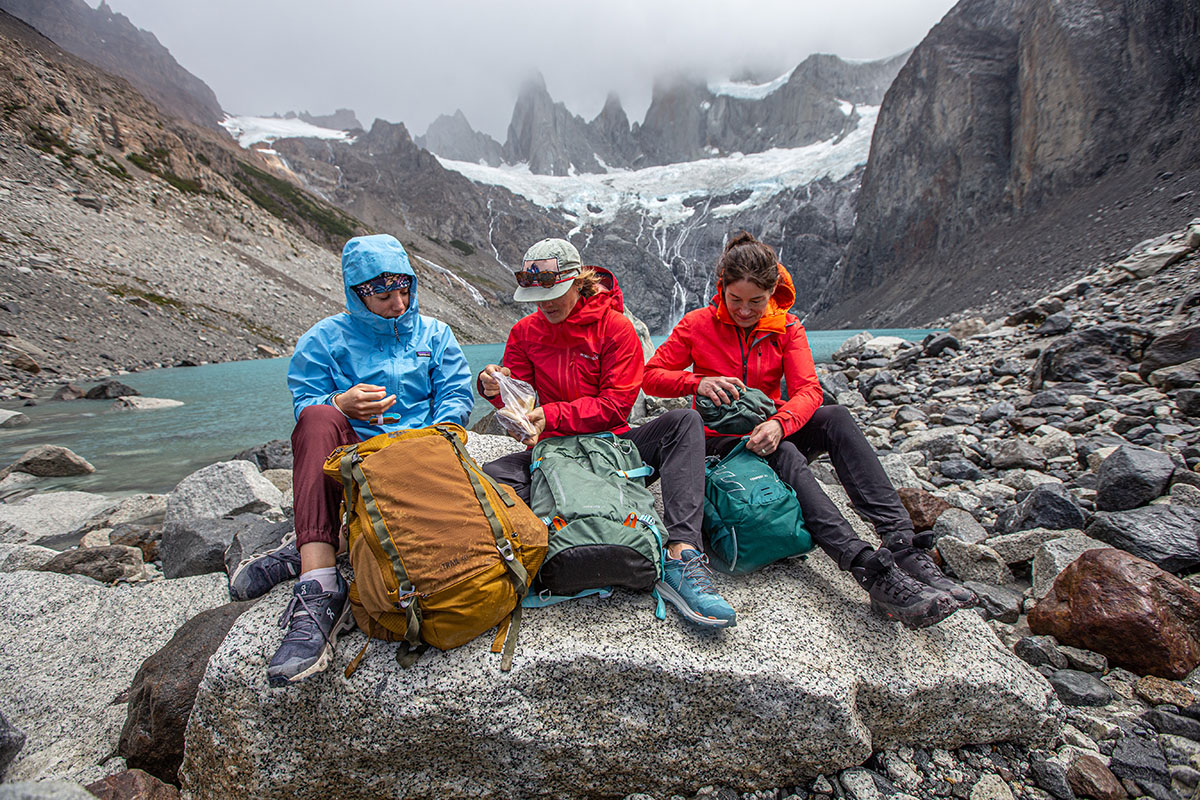
A final alternative to consider is another in-house design: REI Co-op’s Flash 22. Right away, we’ll note that the Trail and Flash are at different ends of the spectrum: While the Trail is a fully featured and high-capacity option for gear-intensive day hikes, the Flash is a minimalist design that instead prioritizes keeping weight and bulk to a minimum. As a result, the feathery Flash isn’t built for shuttling a heavy load, nor does it offer much support with a basic webbing hipbelt, no frame, and a streamlined backpanel design. But it costs just $60, weighs a scant 14 ounces, and packs down very small for storage, making it a great option for quick jaunts, travel, or even bringing along on a backpacking trip. If you often hike with kids or find yourself carrying a lot of gear, however, it’s likely worth spending up for the Trail 40.
Editor’s note: We usually provide a live price comparison table below our outdoor gear reviews, but the Trail pack is sold exclusively by REI Co-op. You can see the women's Trail 40 page here and support us in the process. Thanks!